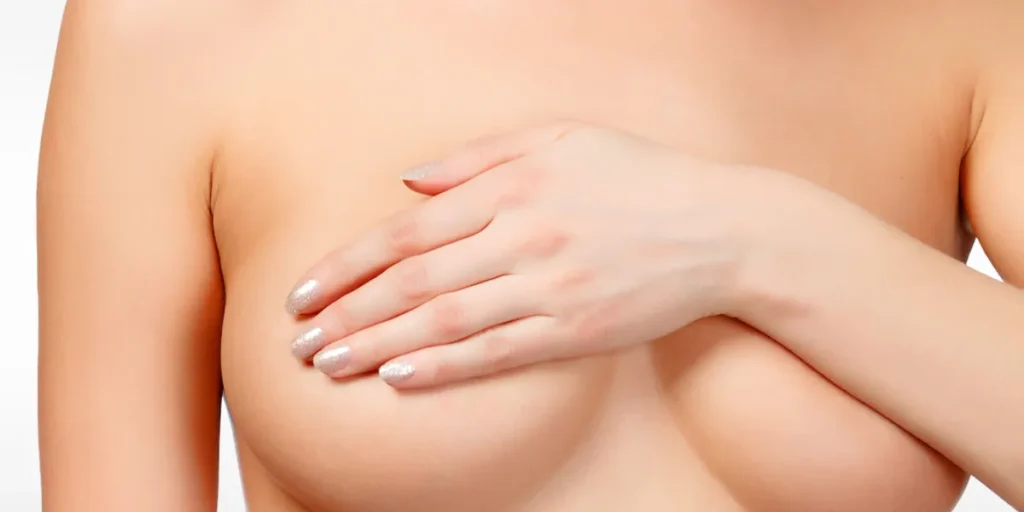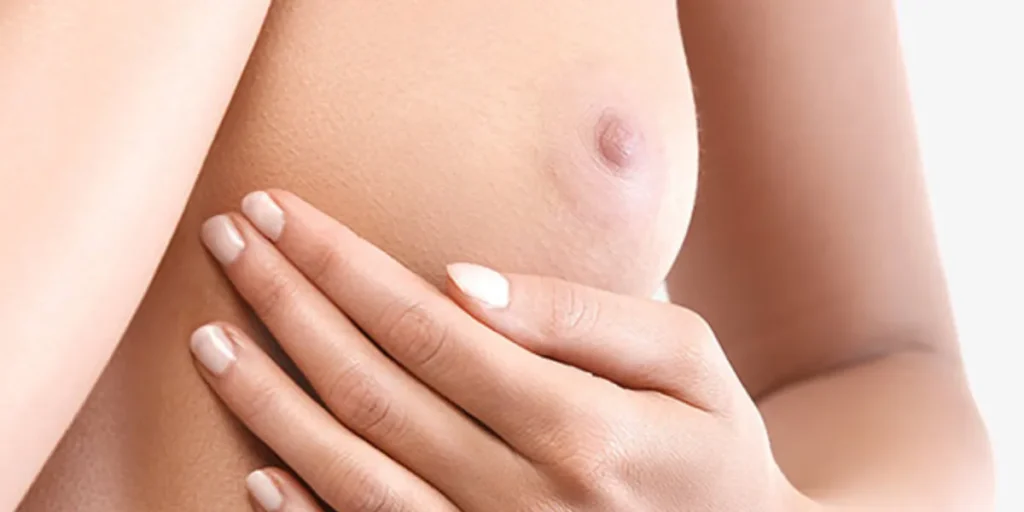Inverted nipples, also known as retracted nipples, occur when the nipples point inward instead of outward. This is a relatively common condition that affects both men and women, with estimates suggesting it’s present in 10-20% of the population. While usually not a cause for alarm, inverted nipples can raise concerns, particularly regarding breastfeeding and potential underlying health issues.
Table of Contents
ToggleTypes of Inverted Nipples
There are two main classifications of inverted nipples:
- Congenital: Present at birth due to underdeveloped milk ducts or a smaller nipple base. These typically cause no problems.
- Acquired: Develop later in life due to factors like scarring, infection, or hormonal changes. These require a doctor’s evaluation.
Severity Levels:
Inverted nipples can also be categorized by severity:
- Grade 1 (Shy Nipples): Protrude slightly with gentle pressure or stimulation.
- Grade 2: Inverted but can be everted (pulled outward) manually.
- Grade 3: Remain inverted even with manipulation.
Causes of Inverted Nipples
Congenital:
- Underdeveloped milk ducts: During fetal development, the milk ducts (tubes carrying milk) might not fully form, causing the nipple to pull inward.
- Smaller nipple base: The tissue anchoring the nipple might be underdeveloped, leading to inversion.
Acquired:
- Scarring: Injuries, piercings, or surgeries around the nipple can cause scar tissue to contract, pulling the nipple inward.
- Infection: Breast infections (mastitis) can inflame tissues, leading to temporary or permanent inversion.
- Hormonal changes: Fluctuations in estrogen and progesterone during puberty, pregnancy, or breastfeeding can cause temporary inversion.
- Breastfeeding: Intense or prolonged suction during breastfeeding can temporarily invert nipples, especially in newborns.
- Certain medications: Some medications, like anti-depressants, can cause side effects like nipple inversion.
Less Common Causes:
- Paget’s disease of the breast: A rare form of breast cancer that can present with nipple inversion and a scaly, crusty appearance.
- Inflammatory breast cancer: An aggressive form of breast cancer that might cause redness, swelling, and nipple inversion.
When to See a Doctor
While inverted nipples are often harmless, seeking professional advice is crucial in certain situations:
- Sudden inversion: If your nipples become inverted for the first time, particularly in adulthood, consult a doctor.
- One nipple affected: If only one nipple is inverted, it warrants a doctor’s visit.
- Nipple discharge: Any discharge, bloody or clear, with inverted nipples needs medical evaluation.
- Changes in the breast: Lumps, dimpling, or skin changes alongside inverted nipples require a doctor’s assessment.
- Breastfeeding difficulties: If inverted nipples make breastfeeding challenging, seek help from a lactation consultant or doctor.
Diagnosis of Inverted Nipples
A doctor will typically diagnose inverted nipples through a physical examination, asking about your medical history and any associated symptoms. Imaging tests like mammograms or ultrasounds might be recommended to rule out underlying conditions.
Treatment Options for Inverted Nipples
Treatment for inverted nipples depends on the cause, severity, and individual needs. Here’s an overview of common approaches:
- No Treatment: For congenital, mild inversions causing no problems, especially in men, no intervention is necessary.
- Non-surgical Techniques: These might be helpful for mildly inverted nipples, especially if breastfeeding is desired.
- Hoffman Maneuver: This involves gently squeezing and rolling the nipple outward for a few minutes daily, starting several weeks before delivery.
- Nipple shields: These silicone covers worn during pregnancy and breastfeeding can help evert the nipple and facilitate latching.
- Surgery: Surgical correction (nipple eversion) is an option for severe inversion or when non-surgical methods fail. It’s typically performed on an outpatient basis and involves releasing the tight tissues and pulling the nipple inward.
Considerations for Breastfeeding:
Women with inverted nipples can still breastfeed successfully. Early intervention with techniques like the Hoffman Maneuver and nipple shields can significantly improve success rates. Consulting a lactation consultant can provide personalized guidance and support.
Conclusion
Inverted nipples are a common condition with varying causes. While most cases are harmless, understanding the different types, potential causes, and when to seek medical advice is crucial. Various treatment options are available depending on the severity and individual needs. If you have concerns about inverted nipples, don’t hesitate to speak with your doctor. With proper guidance and support, you can manage this condition and achieve successful breastfeeding if that’s your goal.

Inverted Nipple FAQs
General Information
- What are inverted nipples? Inverted nipples are nipples that point inward instead of outward. This is a common condition affecting both men and women.
- Are inverted nipples serious? In most cases, no. However, sudden inversion, inversion in only one nipple, or inversion with discharge or breast changes warrant a doctor’s visit.
- Can I breastfeed with inverted nipples? Yes, often with the help of non-surgical techniques like the Hoffman Maneuver or nipple shields. Consulting a lactation consultant is recommended.
Causes
- What causes inverted nipples? There are two main categories: congenital (present at birth) and acquired (developed later in life). Common causes include underdeveloped milk ducts, scarring, infection, hormonal changes, and breastfeeding.
- Can inverted nipples be caused by piercings? Yes, nipple piercings can damage tissues and lead to inversion.
Symptoms and Concerns
- Do inverted nipples smell? No, inverted nipples themselves don’t cause any smell. However, inverted nipples can trap moisture or secretions, leading to infection and a foul odor.
- Are inverted nipples a sign of cancer? Rarely. Inverted nipples can be a symptom of Paget’s disease or inflammatory breast cancer, but these are uncommon. Sudden inversion, especially in one nipple, needs a doctor’s evaluation.
Treatment
- How to fix inverted nipples? Treatment depends on severity and cause. Non-surgical methods like the Hoffman Maneuver or nipple shields are often tried first. In some cases, surgery (nipple eversion) might be an option.
- Can inverted nipples be corrected permanently? Yes, surgery (nipple eversion) can permanently correct severe inversion. However, some mild cases might revert after non-surgical treatment.
Additional Questions
- Are there exercises to help inverted nipples? The Hoffman Maneuver involves gentle squeezing and rolling of the nipple to promote eversion.
- What is the difference between inverted and flat nipples? Inverted nipples point inward, while flat nipples appear flush with the breast without much projection. Both can occur together.
- Where can I find more information about inverted nipples? Consult a doctor or lactation consultant for personalized advice. Reliable online resources from medical institutions can also provide further information.













